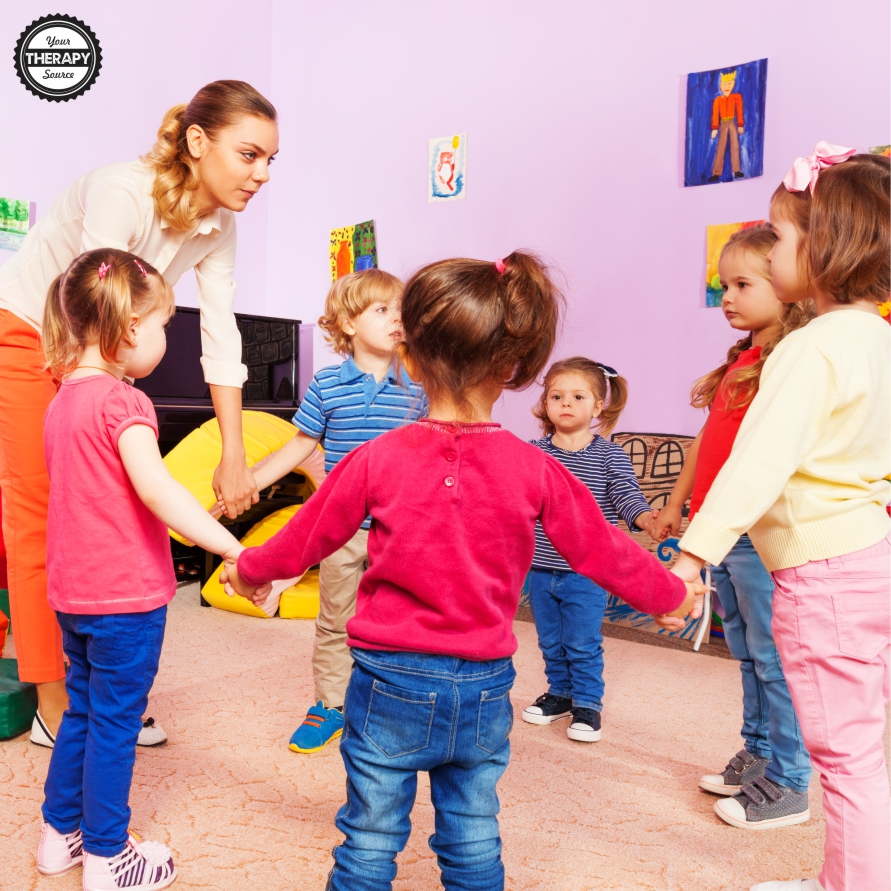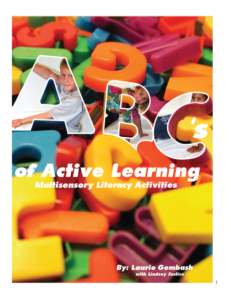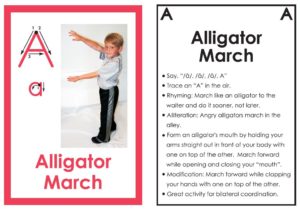Strategies to Support Gross Motor Skills in the Classroom
 5 Strategies to Support Gross Motor Skills in the Classroom
5 Strategies to Support Gross Motor Skills in the Classroom
Embedding motor skill activities into the preschool classroom is so important to help children develop postural control, locomotor skills, and coordination skills. When children are able to maintain an upright posture, participate in physical activities and demonstrate eye-hand coordination skills, it is beneficial for functional learning in school. Sometimes teachers can find it difficult to make time for gross motor skills throughout the day. Here are 5 strategies to support gross motor skills in the classroom.
Make it Routine
Add gross motor skills and physical activity within the normal routine of the classroom. A great time to add movement time is during transitions. Classroom jobs can include physical activity. Read more on how to establish a brain break routine here.
Accessibility
Follow a UDL approach (Universal Design for Learning) and make sure that the environment is accessible for all children including those with physical disabilities and delays. Teachers and therapists can provide multiple means of representation, engagement, and expression for motor skill tasks.
Differentiate
Once the environment is accessible to all the next step is to determine each student’s abilities and alter the gross motor activity as needed. This can be done by modifying the: learning environment (ie change the size, weight, texture, or color of play materials) content (ie using motivational themes), and process (ie use visual supports).
Offer frequent, brief motor breaks
Teachers can provide frequent motor breaks throughout the school day and not limit physical activity time to recess or physical education. Brain breaks are a perfect solution to add throughout the day. Yoga is one of many strategies to support gross motor skills in the classroom too.
Research has shown that 5-20 minute movement breaks in the classroom can positively affect the following:
- cognitive skills including executive function, attention span, memory skills and verbal comprehension
- academic achievement on test scores
- attitude changes in motivation and self-concept
- on task behaviors
- organizational skills
- motor planning
- impulse control
Don’t forget to include a warm-up, physical activity followed by a cool down. This Brain Break Poster Set includes 4 easy to implement brain breaks for an individual or a group of students including a relaxation brain break to prepare students to return to school work after a movement break.
Provide movement and learning opportunities
Research indicates that integrating physical activity to facilitate learning is beneficial in the classroom environment. Two recent studies were performed with preschool students to compare lessons with physical activity and without physical activity. Both studies indicated that integrating physical activity to facilitate learning in a preschool classroom resulted in improved learning outcomes versus a conventional sedentary lesson.
Here are 3 evidence-based reasons why teachers should incorporate movement into classroom instruction:
- increases student interest, motivation (Vazou et al., 2012), and learning (Braniff, 2011).
- improves content knowledge, skills, and test scores in core subjects such as mathematics and reading fluency (Adams-Blair & Oliver, 2011; Erwin, Fedewa, & Ahn, 2013; Browning et al., 2014).
- may help children meet the recommendation to complete the recommended 60 minutes of physical activity every day.
Movement can be infused into language, math, art, science lessons and more.
Settling into a new routine to establish movement in the classroom can be difficult at first for teachers in terms of classroom management. Once the routine is established and students know what to expect, motor skill and cognitive growth will occur.
If you want to get started right away with strategies to support gross motor skills in the classroom check out the resources:
- The ABC’s of Movement®- Combine Movement with Literacy – The ABC’s of Movement® is a pdf document of educational flash cards that combine movement with literacy development. Kids love these colorful flash cards that merge learning the alphabet with twenty six fun, noncompetitive movement activities. Designed for children of all abilities from preschool through 2nd grade, these flash cards were developed by a physical therapist with learning and physical development in mind. Ideal for home and school use. These bright, bold letters and full color photographs of children make learning easy and fun!

- Movement Flashcards – Movement Flashcards digital download includes 10 aerobic exercises with flash cards templates. Students can get physical activity while reviewing material. The 10 aerobic activities include: run in place, jumping, hopping, squats, lunges, skipping, twists, cross crawls, jumping jacks and marching. Each page includes a picture image of the aerobic exercise along with a blank template to type in 18 flash cards. You choose what to work on for academic material.

- The ABC’s of Active Learning – Exploring educational concepts through movement and multiple senses give children opportunities to learn in ways they understand. The alphabet activities from A to Z are a collection of activities that can be used with children of all abilities.
References:
Adams-Blair H., Oliver G. (2011). Daily classroom movement: Physical activity integration into the classroom. International Journal of Health, Wellness, & Society, 1 (3), 147–154.
Braniff C. (2011). Perceptions of an active classroom: Exploration of movement and collaboration with fourth grade students. Networks: An On-line Journal for Teacher Research, 13 (1).
Browning C., Edson A.J., Kimani P., Aslan-Tutak F. (2014). Mathematical content knowledge for teaching elementary mathematics: A focus on geometry and measurement. Mathematics Enthusiast, 11 (2), 333–383.
Centers for Disease Control and Prevention. The association between school based physical activity, including physical education, and academic performance. Atlanta, GA: U.S. Department of Health and Human Services; 2010
Erwin H., Fedewa A., Ahn S. (2013). Student academic performance outcomes of a classroom physical activity intervention: A pilot study. International Electronic Journal of Elementary Education, 5 (2), 109–124.
Mavilidi, M. F., Okely, A. D., Chandler, P., & Paas, F. (2017). Effects of Integrating Physical Activities Into a Science Lesson on Preschool Children’s Learning and Enjoyment. Applied Cognitive Psychology.
Mavilidi, M., Okely, A., Chandler, P., & Paas, F. (2017). Infusing task-relevant physical activities into the classroom: effects on preschool children’s geography learning. Journal of Science and Medicine in Sport, 20, e109.
Vazou S., Gavrilou P., Mamalaki E., Papanastasiou A., Sioumala N. (2012). Does integrating physical activity in the elementary school classroom influence academic motivation? International Journal of Sport and Exercise Psychology, 10 (4), 251–263.
Yang, H. W., Ostrosky, M. M., Favazza, P. C., Stalega, M. V., & Block, M. E. (2018). Embedding Motor Activities Into Inclusive Preschools. Young Exceptional Children, 1096250618783994.




